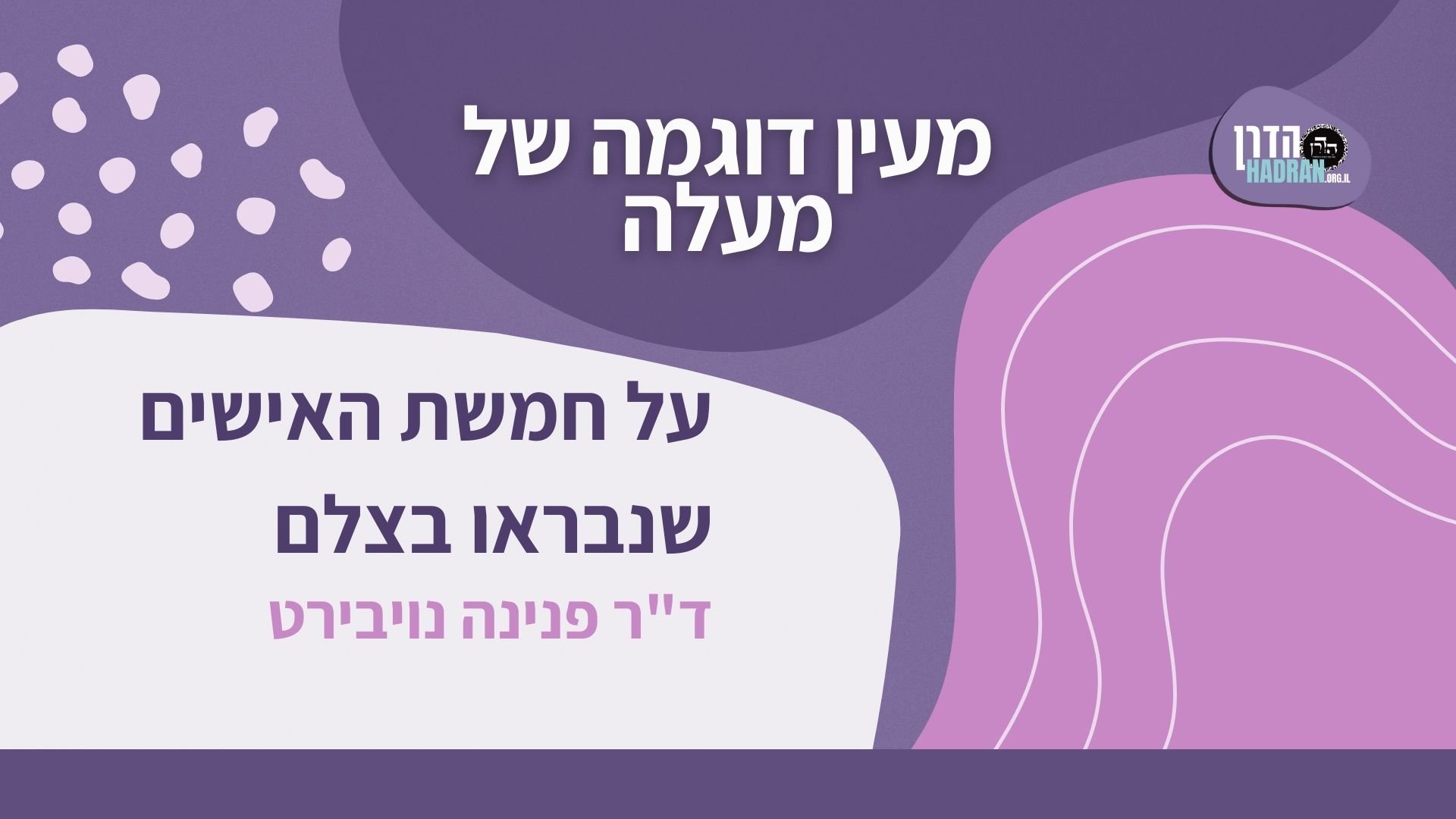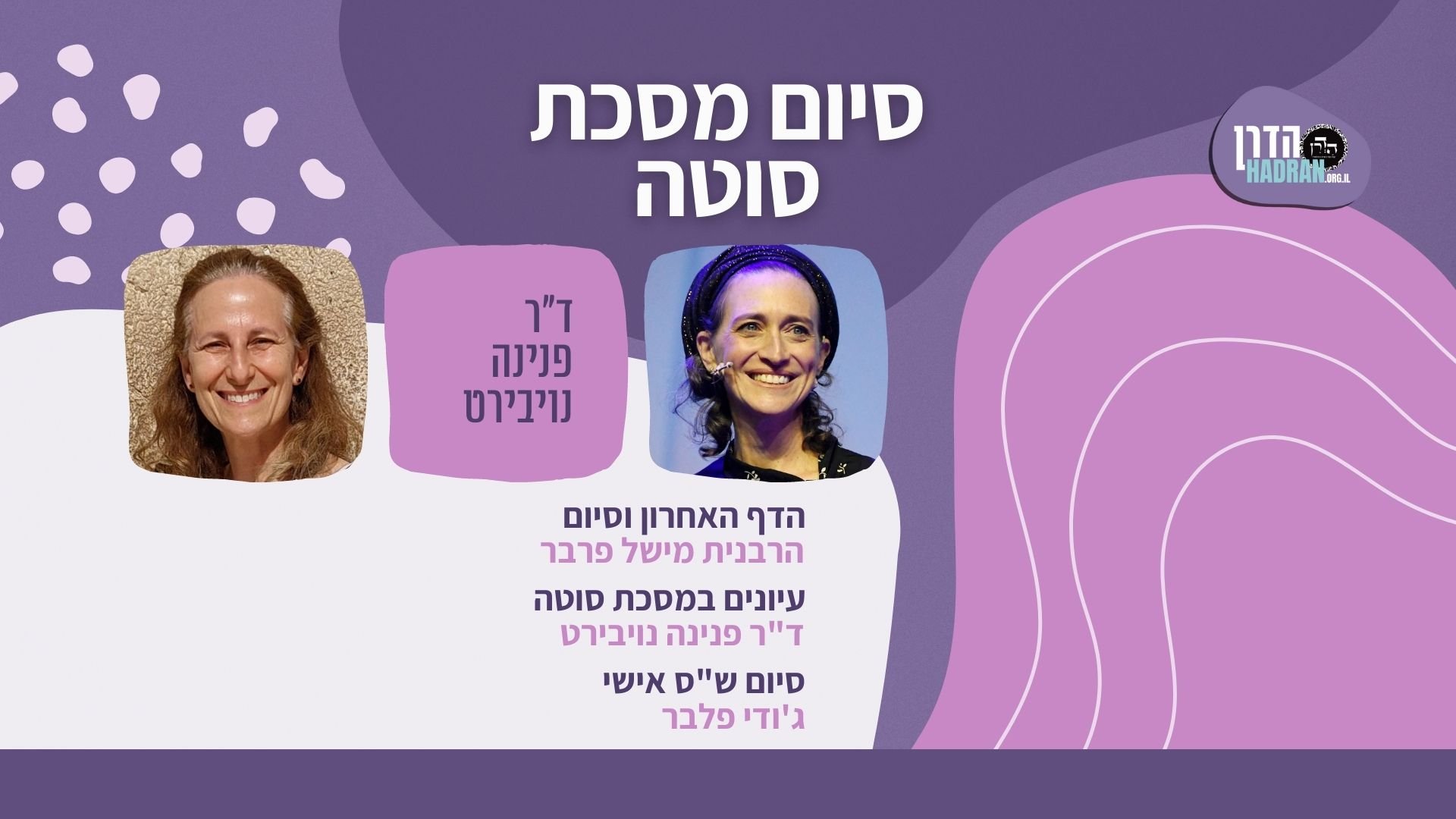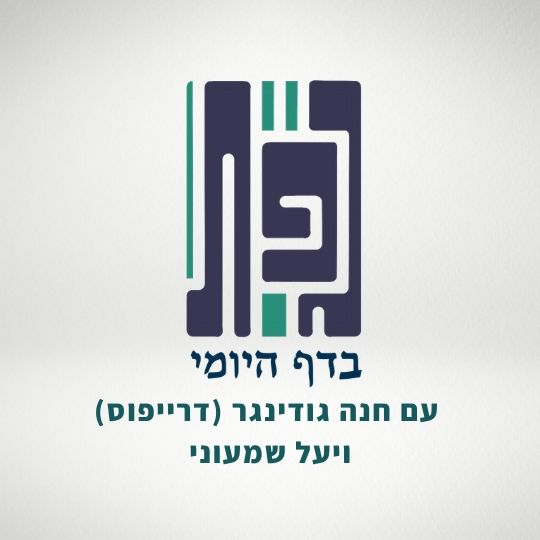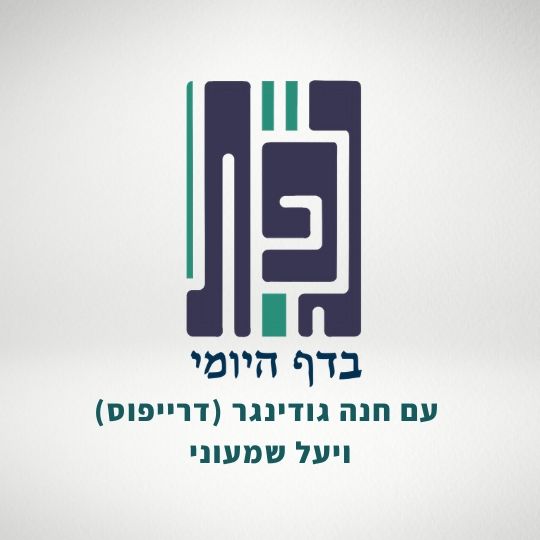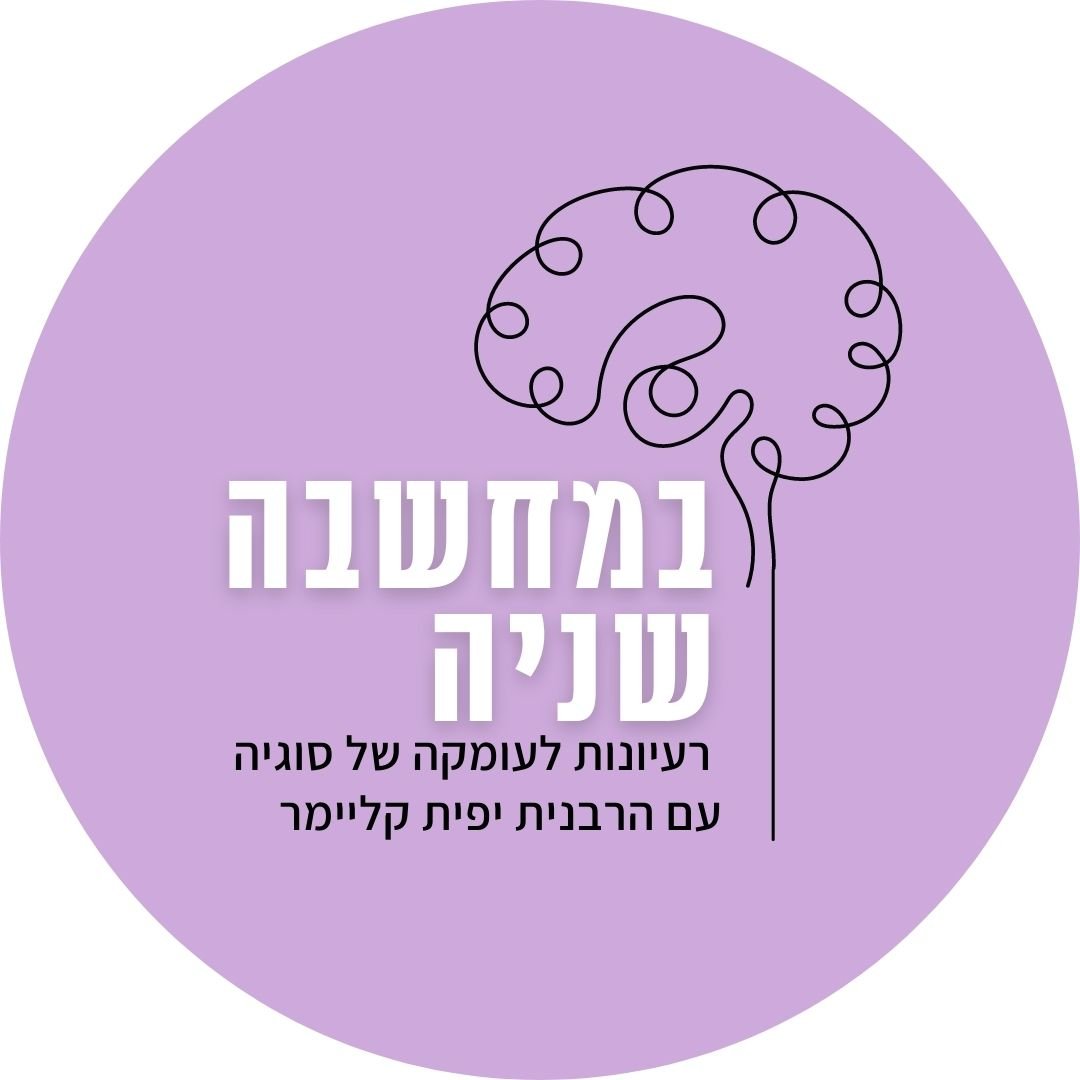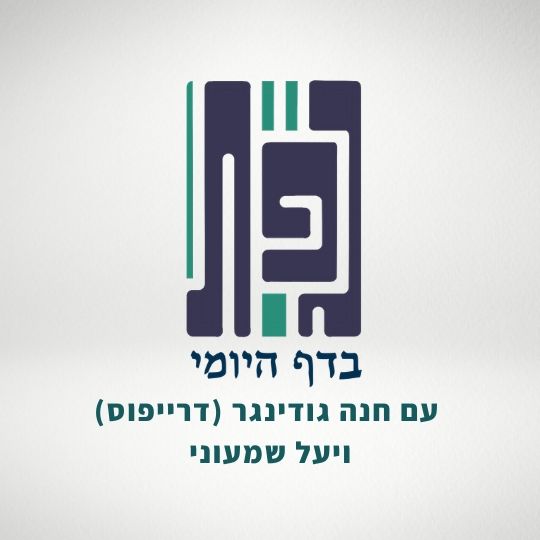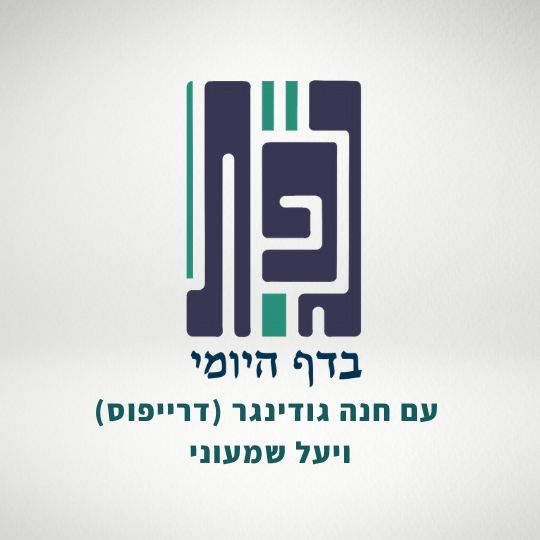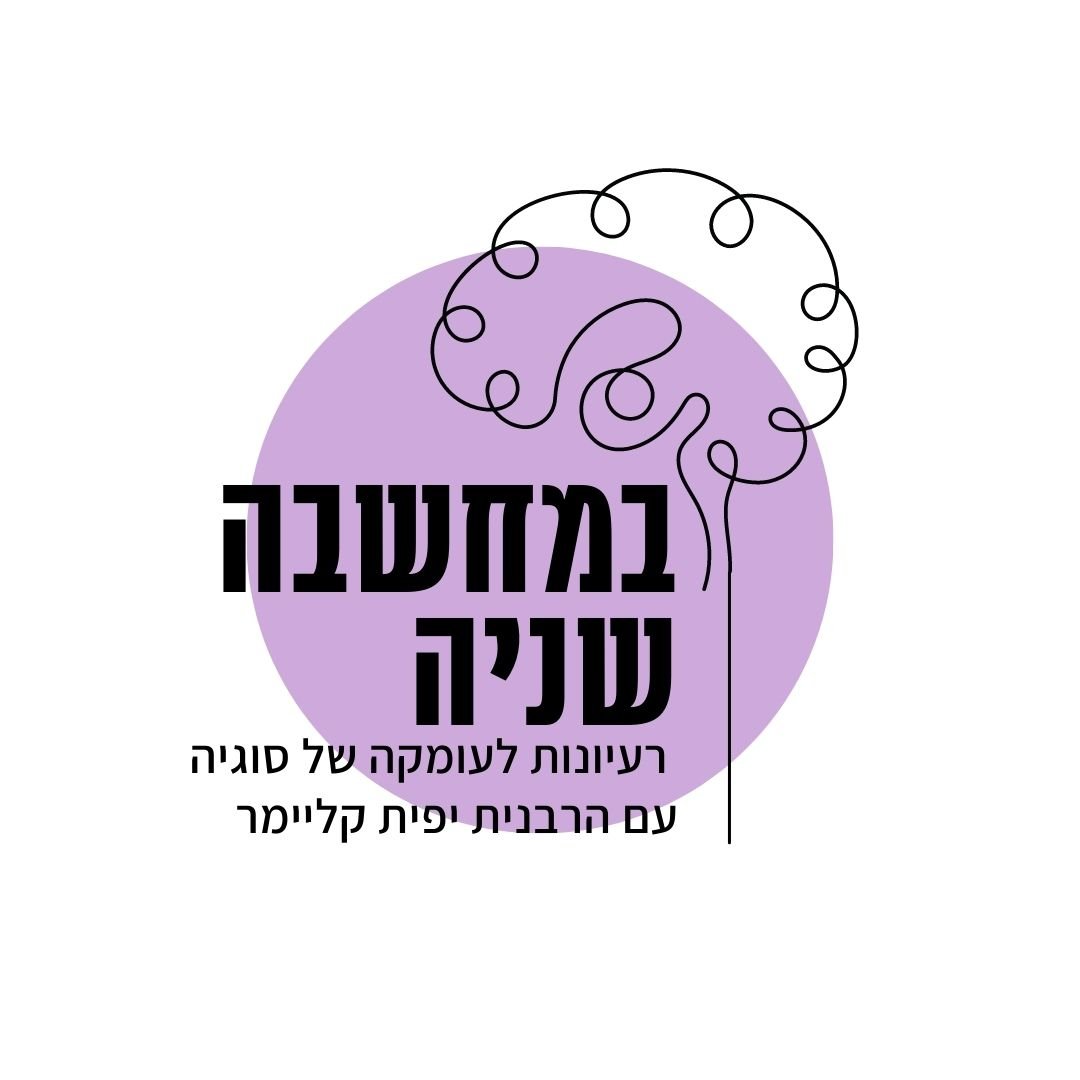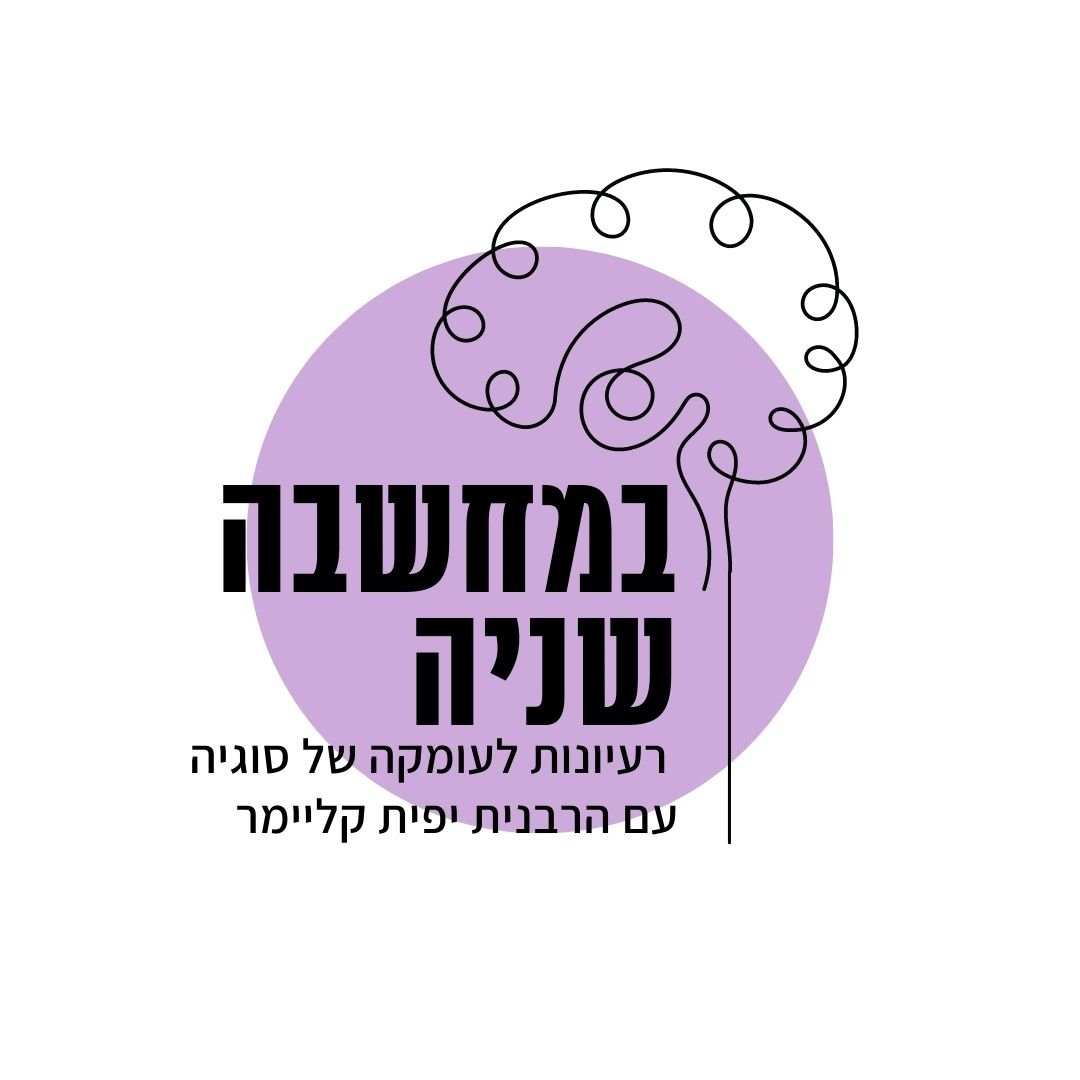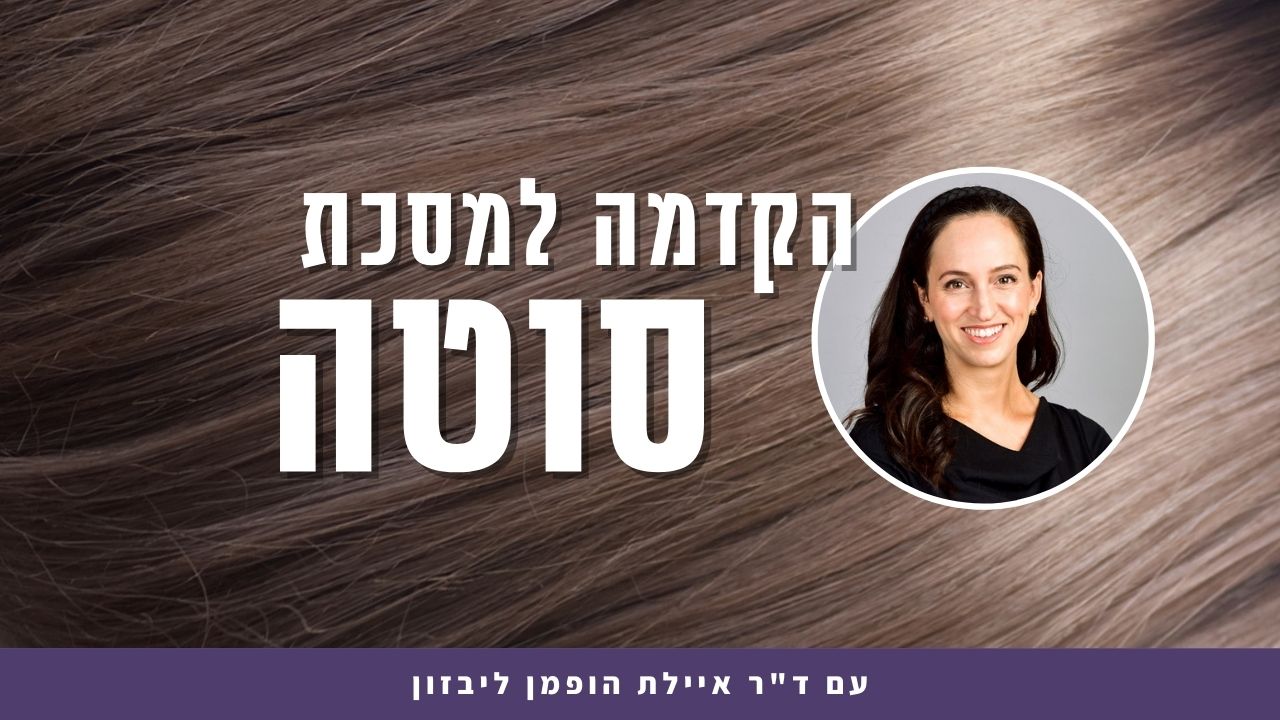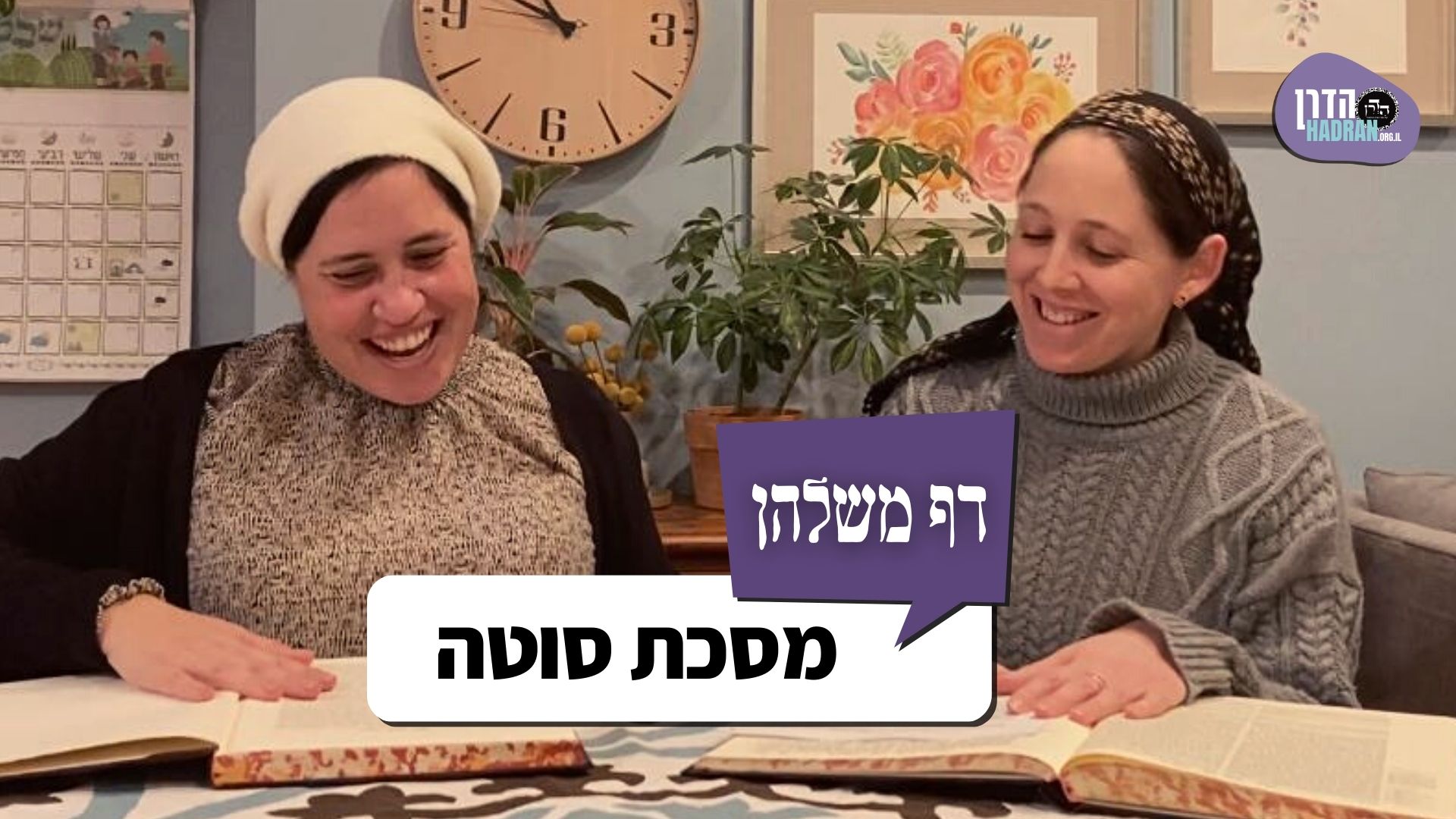סוטה יז
מַתְנִי׳ בָּא לוֹ לִכְתּוֹב אֶת הַמְּגִילָּה, מֵאֵיזֶה מָקוֹם הוּא כּוֹתֵב?
MISHNA: When the priest comes to write the scroll of the sota that is to be placed in the water, from what place in the Torah passage concerning the sota (Numbers 5:11–31) does he write?
מִ״וְאִם לֹא שָׁכַב אִישׁ וְגוֹ׳ וְאַתְּ כִּי שָׂטִית תַּחַת אִישֵׁךְ״,
He starts from the verse: “If no man has lain with you, and if you have not gone astray to defilement while under your husband, you shall be free from this water of bitterness that causes the curse” (Numbers 5:19); and continues: “But if you have gone astray while under your husband, and if you are defiled, and some man has lain with you besides your husband” (Numbers 5:20).
וְאֵינוֹ כּוֹתֵב ״וְהִשְׁבִּיעַ הַכֹּהֵן אֶת הָאִשָּׁה״. וְכוֹתֵב: ״יִתֵּן ה׳ אוֹתָךְ לְאָלָה וְלִשְׁבֻעָה. וּבָאוּ הַמַּיִם הַמְאָרְרִים הָאֵלֶּה בְּמֵעַיִךְ לַצְבּוֹת בֶּטֶן וְלַנְפִּל יָרֵךְ״. וְאֵינוֹ כּוֹתֵב ״וְאָמְרָה הָאִשָּׁה אָמֵן אָמֵן״.
And then he does not write the beginning of the following verse, which states: “Then the priest shall cause the woman to swear with the oath of cursing, and the priest shall say to the woman” (Numbers 5:21), but he does write the oath recorded in the continuation of the verse: “The Lord shall make you a curse and an oath among your people when the Lord will cause your thigh to fall away, and your belly to swell. And this water that causes the curse shall go into your bowels, and cause your belly to swell, and your thigh to fall away” (Numbers 5:21–22); but he does not write the conclusion of the verse: “And the woman shall say: Amen, amen” (Numbers 5:22).
רַבִּי יוֹסֵי אוֹמֵר: לֹא הָיָה מַפְסִיק.
Rabbi Yosei says: He does not interrupt the verses but rather writes the entire passage without any omissions.
רַבִּי יְהוּדָה אוֹמֵר: כׇּל עַצְמוֹ אֵינוֹ כּוֹתֵב אֶלָּא ״יִתֵּן ה׳ אוֹתָךְ לְאָלָה וְלִשְׁבֻעָה וְגוֹ׳ וּבָאוּ הַמַּיִם הַמְאָרְרִים הָאֵלֶּה בְּמֵעַיִךְ וְגוֹ׳״. וְאֵינוֹ כּוֹתֵב ״וְאָמְרָה הָאִשָּׁה אָמֵן אָמֵן״.
Rabbi Yehuda says: He writes nothing other than curses recorded in the final verses cited above: “The Lord shall make you a curse and an oath among your people when the Lord will cause your thigh to fall away, and your belly to swell. And this water that causes the curse shall go into your bowels, and cause your belly to swell, and your thigh to fall away.” And he does not write the conclusion of the verse: “And the woman shall say: Amen, amen.”
גְּמָ׳ בְּמַאי קָא מִיפַּלְגִי? בְּהַאי קְרָא קָמִיפַּלְגִי: ״וְכָתַב אֶת הָאָלוֹת הָאֵלֶּה הַכֹּהֵן בַּסֵּפֶר״.
GEMARA: With regard to what issue do the Sages in the mishna disagree? What is the source of their disagreement? They disagree concerning the proper interpretation of the verse: “And the priest shall write these [ha’eleh] curses [et ha’alot] in a scroll” (Numbers 5:23).
רַבִּי מֵאִיר סָבַר: ״אָלוֹת״ — אָלוֹת מַמָּשׁ. ״הָאָלוֹת״ — לְרַבּוֹת קְלָלוֹת הַבָּאוֹת מֵחֲמַת בְּרָכוֹת. ״אֵלֶּה״ — לְמַעוֹטֵי קְלָלוֹת שֶׁבְּמִשְׁנֵה תוֹרָה. ״הָאֵלֶּה״ — לְמַעוֹטֵי צַוּוֹאוֹת וְקַבָּלוֹת אָמֵן.
Rabbi Meir, the first tanna of the mishna, reasons: The word “alot,” curses, is referring to actual curses. The prefix ha, meaning: The, in the word “ha’alot” serves to include curses that come on account of the blessings, i.e., the curses that are inferred from the phrase: “You shall be free from this water of bitterness that causes the curse” (5:19). The word “eleh,” meaning these, is a limiting term that serves to exclude the long list of curses that are recorded in Mishne Torah, the book of Deuteronomy (chapter 28). Although these curses are also referred to as “alot,” the priest does not write them. The addition of the definite article in the word “ha’eleh” serves to exclude the commands recorded in the sota passage and the acceptances by the word “amen” recorded there as well. The priest need not write these sections of the passage.
וְרַבִּי יוֹסֵי: כּוּלְּהוּ כִּדְקָאָמְרַתְּ, ״אֶת״ — לְרַבּוֹת צַוּוֹאוֹת וְקַבָּלוֹת.
And Rabbi Yosei interprets it: It would all be as you, Rabbi Meir, said; however, the additional word “et” in the verse amplifies its scope. It serves to include both commands and acceptances, as they must be written in the scroll as well.
וְרַבִּי מֵאִיר — אֶתִּים לָא דָּרֵישׁ.
And why does Rabbi Meir disagree? As a rule, he does not interpret the additional word et as amplifying a verse’s scope.
וְרַבִּי יְהוּדָה — כּוּלְּהוּ בְּמִיעוּטֵי דָּרֵישׁ לְהוּ. ״אָלוֹת״ — אָלוֹת מַמָּשׁ. ״הָאָלוֹת״ — לְמַעוֹטֵי קְלָלוֹת הַבָּאוֹת מֵחֲמַת בְּרָכוֹת. ״אֵלֶּה״ — לְמַעוֹטֵי קְלָלוֹת שֶׁבְּמִשְׁנֵה תוֹרָה. ״הָאֵלֶּה״ — לְמַעוֹטֵי צַוּוֹאוֹת וְקַבָּלוֹת.
And as for Rabbi Yehuda, he interprets all of the terms in the verse as exclusionary: The word “alot” is referring specifically to the actual curses recorded in the verses. The definite article in the word “ha’alot” serves to exclude curses that come on account of blessings. The word “eleh” serves to exclude the curses recorded in the Mishne Torah. And the definite article in the word “ha’eleh” serves to exclude the commands and acceptances recorded in the verses.
וְרַבִּי מֵאִיר, מַאי שְׁנָא הַאי הֵי דִּמְרַבֵּי בֵּיהּ, וּמַאי שְׁנָא הַאי הֵי דְּמַעֵיט בֵּיהּ?
The Gemara asks: But according to Rabbi Meir, what is different about this letter heh at the beginning of the word “ha’alot” such that it amplifies the halakha to include curses that come on account of the blessings, and what is different about that letter heh in the word “ha’eleh” such that it excludes the commands and acceptances by the word “amen”? Why should one amplify while the other excludes?
הֵי דְּגַבֵּי(ה ד)רִיבּוּיָא — רִיבּוּיָא (הִיא), הֵי דְּגַבֵּי(ה ד)מִיעוּטָא — מִיעוּטָא.
The Gemara answers: The letter heh when written near an amplifier is an amplifier. The word “alot” itself amplifies the halakha, and the definite article extends that amplification; and a heh when written near a restrictor is a restrictor. The word “eleh” itself restricts the halakha, and the definite article before it extends that restriction.
וְהָא לֵית לֵיהּ לְרַבִּי מֵאִיר מִכְּלָל לָאו אַתָּה שׁוֹמֵעַ הֵן?
The Gemara asks: But Rabbi Meir does not accept the principle that from a negative statement you can infer a positive statement. What is to be gained by writing the blessings if one cannot infer the curses from them?
אָמַר רַבִּי תַּנְחוּם: ״הִנָּקִי״ כְּתִיב.
Rabbi Tanḥum says: It is written: “If no man has lain with you…you shall be free [hinnaki]” (Numbers 5:19). The word “hinnaki” should be interpreted as if it were in fact ḥinnaki, meaning: You shall choke. When read with the beginning of the next verse, it then forms the sentence: You shall choke… if you have gone astray while under your husband. Therefore, Rabbi Meir understands the blessings themselves to have a dimension of a curse.
דָּרֵישׁ רַבִּי עֲקִיבָא: אִישׁ וְאִשָּׁה זָכוּ — שְׁכִינָה בֵּינֵיהֶן. לֹא זָכוּ — אֵשׁ אוֹכַלְתָּן.
§ Rabbi Akiva taught: If a man [ish] and woman [isha] merit reward through a faithful marriage, the Divine Presence rests between them. The words ish and isha are almost identical; the difference between them is the middle letter yod in ish, and the final letter heh in isha. These two letters can be joined to form the name of God spelled yod, heh. But if due to licentiousness they do not merit reward, the Divine Presence departs, leaving in each word only the letters alef and shin, which spell esh, fire. Therefore, fire consumes them.
אָמַר רָבָא: וּדְאִשָּׁה עֲדִיפָא מִדְּאִישׁ, מַאי טַעְמָא — הַאי מְצָרֵף, וְהַאי לָא מְצָרֵף.
Rava said: And the fire that consumes the woman is stronger and more immediate than that which consumes the man. What is the reason for this? The letters alef and shin in the word isha are adjacent, joined together, but in the word ish they are not joined, as the letter yod is written between them.
אָמַר רָבָא: מִפְּנֵי מָה אָמְרָה תּוֹרָה הָבֵא עָפָר לְסוֹטָה? זָכְתָה — יוֹצֵא מִמֶּנָּה בֵּן כְּאַבְרָהָם אָבִינוּ, דִּכְתִיב בֵּיהּ ״עָפָר וָאֵפֶר״, לֹא זָכְתָה — תַּחְזוֹר לַעֲפָרָהּ.
Additionally, Rava says: For what reason did the Torah say: Bring dust for the sota? It is because if she merits to be proven faithful after drinking the water of the sota, a child like our Patriarch Abraham will emerge from her, as it is written with regard to Abraham that he said: “I am but dust and ashes” (Genesis 18:27). But if she does not merit to be proven faithful after drinking the water of the sota, she shall die and return to her dust, the soil from which mankind was formed.
דְּרֵישׁ רָבָא: בִּשְׂכַר שֶׁאָמַר אַבְרָהָם אָבִינוּ ״וְאָנֹכִי עָפָר וָאֵפֶר״, זָכוּ בָּנָיו לִשְׁתֵּי מִצְוֹת, אֵפֶר פָּרָה וַעֲפַר סוֹטָה.
And Rava further taught: As reward for that which our Patriarch Abraham said: “And I am but dust and ashes” (Genesis 18:27), his children merited two mitzvot: The ashes of the red heifer (see Numbers, chapter 19) and the dust of the sota.
וְהָאִיכָּא נָמֵי עֲפַר כִּיסּוּי הַדָּם!
The Gemara asks: But there is also another mitzva involving dust: The dust used for covering the blood of a slaughtered undomesticated animal or fowl (see Leviticus 17:13).
הָתָם הֶכְשֵׁר מִצְוָה אִיכָּא, הֲנָאָה לֵיכָּא.
The Gemara answers: There, the dust does serve as an accessory to the mitzva of covering the blood, but there is no benefit imparted by it. It occurs after the animal has been slaughtered and does not itself render the meat fit for consumption.
דָּרֵשׁ רָבָא: בִּשְׂכַר שֶׁאָמַר אַבְרָהָם אָבִינוּ ״אִם מִחוּט וְעַד שְׂרוֹךְ נַעַל״, זָכוּ בָּנָיו לִשְׁתֵּי מִצְוֹת: חוּט שֶׁל תְּכֵלֶת וּרְצוּעָה שֶׁל תְּפִלִּין.
Rava further taught: As reward for that which our Patriarch Abraham said to the king of Sodom: “That I will not take a thread nor a shoe strap nor anything that is yours” (Genesis 14:23), distancing himself from anything not rightfully his, his children merited two mitzvot: The thread of sky-blue wool worn on ritual fringes and the strap of phylacteries.
בִּשְׁלָמָא רְצוּעָה שֶׁל תְּפִלִּין, דִּכְתִיב: ״וְרָאוּ כׇּל עַמֵּי הָאָרֶץ כִּי שֵׁם ה׳ נִקְרָא עָלֶיךָ״, וְתַנְיָא, רַבִּי אֱלִיעֶזֶר הַגָּדוֹל אוֹמֵר: אֵלּוּ תְּפִלִּין שֶׁבָּרֹאשׁ.
The Gemara asks: Granted, the strap of the phylacteries impart benefit, as it is written: “And all the peoples of the earth shall see that the name of the Lord is called upon you; and they shall be afraid of you” (Deuteronomy 28:10). And it is taught in a baraita that Rabbi Eliezer the Great says: This is a reference to the phylacteries of the head, upon which the name of God is written. Phylacteries therefore impart the splendor and grandeur of God and are a fit reward.
אֶלָּא חוּט שֶׁל תְּכֵלֶת, מַאי הִיא? דְּתַנְיָא, הָיָה רַבִּי מֵאִיר אוֹמֵר: מָה נִשְׁתַּנָּה תְּכֵלֶת מִכׇּל מִינֵי צִבְעוֹנִין?
But what is the benefit imparted by the thread of sky-blue wool? The Gemara answers: As it is taught in a baraita that Rabbi Meir would say: What is different about sky-blue from all other colors such that it was specified for the mitzva of ritual fringes?
מִפְּנֵי שֶׁהַתְּכֵלֶת דּוֹמֶה לַיָּם, וְיָם דּוֹמֶה לָרָקִיעַ, וְרָקִיעַ דּוֹמֶה לְכִסֵּא הַכָּבוֹד — שֶׁנֶּאֱמַר: ״וַיִּרְאוּ אֵת אֱלֹהֵי יִשְׂרָאֵל וְתַחַת רַגְלָיו כְּמַעֲשֵׂה לִבְנַת הַסַּפִּיר וּכְעֶצֶם הַשָּׁמַיִם לָטֹהַר״, וּכְתִיב: ״כְּמַרְאֵה אֶבֶן סַפִּיר דְּמוּת כִּסֵּא״.
It is because sky-blue dye is similar in its color to the sea, and the sea is similar to the sky, and the sky is similar to the Throne of Glory, as it is stated: “And they saw the God of Israel; and there was under His feet the like of a paved work of sapphire stone, and the like of the very heaven for clearness” (Exodus 24:10). This verse shows that the heavens are similar to sapphire, and it is written: “And above the firmament that was over their heads was the likeness of a throne, as the appearance of a sapphire stone” (Ezekiel 1:26). Therefore, the throne is similar to the heavens. The color of sky blue dye acts as an indication of the bond between the Jewish people and the Divine Presence.
מַתְנִי׳ אֵינוֹ כּוֹתֵב לֹא עַל הַלּוּחַ, וְלֹא עַל הַנְּיָיר, וְלֹא עַל
MISHNA: The priest does not write the scroll of the sota upon a wooden tablet, and not upon paper made from grass, and not upon
הַדִּיפְתְּרָא, אֶלָּא עַל הַמְּגִילָּה, שֶׁנֶּאֱמַר: ״בַּסֵּפֶר״.
diftera, a hide that is only partially processed, as it is salted and treated with flour but not gallnuts; rather, it must be written only on a scroll of parchment, as it is stated: “And the priest shall write these curses in a scroll” (Numbers 5:23).
וְאֵינוֹ כּוֹתֵב לֹא בְּקוֹמוֹס וְלֹא בְּקַנְקַנְתּוֹם, וְלֹא בְּכׇל דָּבָר שֶׁרוֹשֵׁם, אֶלָּא בִּדְיוֹ, שֶׁנֶּאֱמַר: ״וּמָחָה״, כְּתָב שֶׁיָּכוֹל לִמָּחוֹת.
And the scribe may not write with gum [komos], and not with iron sulfate [kankantom], nor with any substance that makes a mark and cannot be completely erased, but only with ink made from soot, as it is stated in the continuation of the same verse: “And he shall blot them out into the water of bitterness” (Numbers 5:23). This indicates that the scroll must be written with a writing that can be erased in water.
גְּמָ׳ אָמַר רָבָא: מְגִילַּת סוֹטָה שֶׁכְּתָבָהּ בַּלַּיְלָה — פְּסוּלָה. מַאי טַעְמָא — אָתְיָא ״תּוֹרָה״ ״תּוֹרָה״. כְּתִיב הָכָא: ״וְעָשָׂה לָהּ הַכֹּהֵן אֵת כׇּל הַתּוֹרָה הַזֹּאת״, וּכְתִיב הָתָם: ״עַל פִּי הַתּוֹרָה אֲשֶׁר יוֹרוּךָ וְעַל הַמִּשְׁפָּט״, מָה מִשְׁפָּט בַּיּוֹם — אַף מְגִילַּת סוֹטָה בַּיּוֹם.
GEMARA: Rava says: A scroll of a sota that one wrote at night is unfit. What is the reason for this? It is derived by verbal analogy between one instance of the word “law” and another instance of the word “law.” It is written here, with regard to a sota: “And the priest shall execute upon her all this law” (Numbers 5:30), and it is written there, with regard to judgment: “According to the law, which they shall teach you, and according to the judgment, which they shall tell you” (Deuteronomy 17:11). Just as judgment may be done only by day, so too the scroll of a sota may be written only by day.
כְּתָבָהּ לְמַפְרֵעַ — פְּסוּלָה, דִּכְתִיב: ״וְכָתַב אֶת הָאָלוֹת הָאֵלֶּה״, כִּי דִּכְתִיבָא.
If one wrote the scroll out of sequence, it is unfit, as it is written: “And the priest shall write these curses in a scroll” (Numbers 5:23). They must be written in the scroll just as they are written in the Torah.
כְּתָבָהּ קוֹדֶם שֶׁתְּקַבֵּל עָלֶיהָ שְׁבוּעָה — פְּסוּלָה, שֶׁנֶּאֱמַר: ״וְהִשְׁבִּיעַ״, וְאַחַר כָּךְ ״וְכָתַב״.
If one wrote the scroll before the sota accepted the oath upon herself, the scroll is unfit, as it is stated: “Then the priest shall cause the woman to swear with the oath of cursing” (Numbers 5:21), and afterward it states: “And the priest shall write these curses in a scroll” (Numbers 5:23).
כְּתָבָהּ אִיגֶּרֶת — פְּסוּלָה. ״בַּסֵּפֶר״ אָמַר רַחֲמָנָא.
If one wrote the scroll as a letter, i.e., without first scoring the lines onto the parchment, it is unfit, as the Merciful One states in the Torah: “In a scroll,” indicating that it must be written like a Torah scroll, in which the parchment must be scored.

